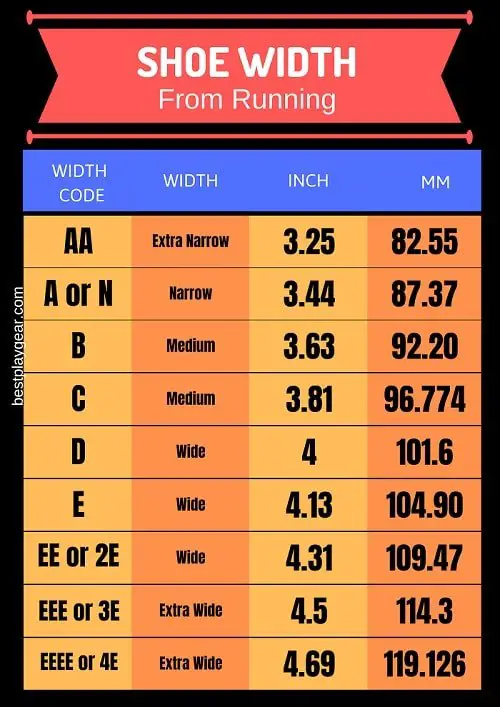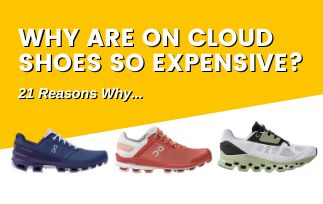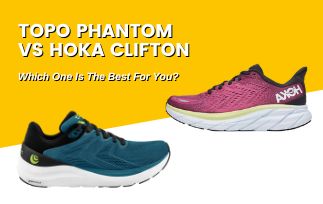Arrghhh…My every run ends in so much pain…
Why is the side of the feet red? What is that bump near big toe? Do you ask yourself these questions? If so, then let me introduce to you Bunions…
Though you cannot get rid of it without surgery, it is nothing to be feared off.
You can easily manage it, using a
Also, since this condition is unique, it
So, today we will be discussing some tips to make your running with bunions better and safer.
Who says running and bunions don’t gel well…Ask me…I’m a runner with the bunion.
However, there are so many myths, surrounding running with bunions. Many times you will hear
What Is a bunion?
A bunion is a bump on the side of the big toe of your feet.
Other names of a bunion are hallux valgus or hallux abducto valgus
But basically, this is an alteration of the bony structure of your feet due to various reasons.
Sometimes the contour is even visible from the side of a closed shoe.
Also, the side of the shoe near the joint of your big toe and rest of the feet is more prone to wear and tear
You will also notice that, if you wear closed shoe for some time, the joint becomes inflamed and turn red
Also, there will be a throbbing sensation and that area becomes untouchable.
The worst part is, the bunion becomes more and more prominent as you age.
Consequently, the bump on the side of your feet also becomes bigger and the level of pain increases.
How is a bunion formed?
When the big-toe decides to lean on the second finger of your feet, the bony framework of your toes goes out of alignment.
This causes the bump or the bunion to form.
However, it is commonly believed that your stilettos are responsible for your bunions.
If you come across such a person, be sure to leave a mark on their feet with your stilettos.
They are not the cause of it.
But if you already have bunions, then wearing stilettos or a closed shoe may worsen the condition.
Now the obvious question is…
What running shoes are best for bunions?
Running shoes that are best for bunions are:
- Brooks Ghost 13 – For Neutral runners
- Asics Gel Kayano 27 – For Overpronation
- Asics Gel Cumulus 22 – For Supination
All these running shoes have a couple of things in common. They have a wide toe box and great arch support.
Not on these three, there are a lot of choices for running shoes for bunions.
I’ve covered them extensively in different articles. You can find all of them in one place here.
Here you will find not only running shoes for bunions but also suggestions for shoes with a combination of problems.
One list I would specifically mention here as that is rare to find – If you have wide feet with bunions, then finding a running shoe for you is trouble.
We have a solution for you. Here is the list of some best running shoes for bunions for wide feet.
They will fit you perfectly and your bunion will not turn into a rebel.
Why is a bunion so painful?
The bunion, if kept open mostly doesn’t have much pain.
Which mean, if your is open you will not have any issue,
If you often say that, “my bunions are killing me” then there is something wrong.
For example, if you wear some narrow covered shoe, the bump gets rubbed too much.
Also, due to the closeness, the shoe becomes restrictive and puts additional pressure on our sweet old bump.
Hence, the bunions revolts…and will cause
- Pain (sometimes excruciating)
- Soreness
- Inflammation
- Redness
- Burning sensation
- Numbness (In extreme cases)

Running and bunions are not a friendly match. If you are running with bunions, then it may be very painful. Also, can you develop bunions from running? If you need your bunion questions about running answered, then read on…
How to fix a bunion?
There are basically two ways you can fix the bunion.
1. Temporarily by using some of the following techniques
- Using Protective Pads
- Orthotics
- Splints and Braces
- Foot Exercises
2. Permanently through Surgery
You can fix your bunion by undergoing surgery.
This should be your last resort and if the pain is too much to handle.
However, make sure that you visit a sports podiatrist for a consultation.
Also, follow your physicians’ advice to the T, to recover from the surgery.
Is there a natural way to cure bunions?
You cannot cure bunions in a natural way.
However, you can definitely get some relief from the pain using some home remedies.
Try out some of these:
- Use some ice on your bunion
- Rub the area with warm olive, castor, or coconut oil.
- Do some foot exercises (check below for detailed exercises)
- Soak your feet in an Epsom salt bath.
- Sip camomile tea.
Can You Run With A Bunion?
Absolutely Yes!
There are runners who have been running marathons with bunions.
But you definitely need some more precautions than the regular runners.
This way you will not have to stop your training in between due to excessive pain in your feet.
I know people who dreaded the morning run due to this pain afterward.
So, what do you need to comfortably run with a bunion?
9 Tips For Running With Bunions
Here are 9 tips that will make you run more comfortably…
1. Lacing Technique
Before you run out to buy a new pair of shoes let me tell you that your existing shoe can be more comfortable…
How?
This is basically by using a new lacing technique called “Bunion Step-Over”
Here is a small video which can help you to understand the technique more clearly:
2. Use Proper Shoes
Having Bunions surely reduces your options. Still, you have plenty of running shoes to choose from.
While selecting, look out for two things:
- The Shoe should be Wide (2E or 4E)
- It should have good stability
If your current shoe has these two things, then great! You just need to change your lacing technique.
Otherwise, you may have to buy a new shoe like Saucony Women’s Omni 16 or Brooks Adrenaline GTS 20
The above shoe guidelines are good, but the problem is, the width of 2E or 4E varies with the shoe brand.
So, how to select the perfect width every time?
Here is a step by step guide that will help you get the perfect width shoe, every time.
Once you have determined the width of your running shoe, now match it with the chart below to find out the width:
Tip: Before purchasing the shoe, ask your fitting expert, the width of the shoe in cm, or inches. This will be more accurate, rather than asking for a 2E or 4E

3. Socks
Most of the runners use socks under their running shoes.
This can cause a lot of discomforts if the wearer has bunions.
Typically, the thicker the socks, the more uncomfortable it is since it rubs the bunion badly.
However, socks like Sockwell Revolution Graduated Compression is anti-blister and thin.
This is the preferred choice of many bunion runners.
Also, if your socks have built-in protective pads, then it will be very comfortable and will not cause any discomfort.
However, these socks are a bit expensive than your regular socks but tend to last long.
This way you can offset the cost and also do away with pain.
4. Protective pads
Since you are using 2E or 4E Shoe, it will have enough room to accommodate a bunion protective pad like NatraCure Gel Big Toe Bunion Guard.
These are generally gel-based or moleskin pads created to protect your bunion from friction.
With less friction and pressure, your bunion will not cause you any trouble or pain.
Caution: Do not use medicated pads. they contain mild acid. This will eat away your skin.
5. Orthotics
Orthotics are special insoles.
They are molded in such a way that, it prevents the formation of bunions.
If you already have a bunion, it will provide additional support as it reduces pronation, thus stabilizing the big toe joint.
In fact, if you have a severe case of bunion you can get custom made inserts that are in the shape of feet.
This will give you a lot of relief from the bunion pain.
6. Splints and braces
There are a lot of products in this category.
Some are very rigid and can only be worn at night.
Others are flexible and thin and can be comfortably worn under the shoes.
Many of these products claim that they correct bunions.
However, there is no scientific proof that they can do this.
They can only relieve the pain as they pull the toe to its correct position, thus relieving tension on the tendons and the foot muscles.
7. Foot Exercises
It is wrongly believed that bunions can be fixed by foot exercises.
However, special foot exercises will strengthen the toe muscles and can relieve pain and discomfort.
Whatever exercises you are following, make sure you do it multiple times in a day.
This will help you to get results faster.
If you are not sure what exercises to follow, this video will give you a kick start.
8. Bunion Taping
This technique is especially helpful if your bunion is starting to form, which means the early stages of a bunion.
You have to stretch your big toe and make it straight.
Then with the help of a tape, keep it in place, by tying it with your other toes in the opposite direction.
This will not correct the bunion and is just a supplement for your toe exercises.
If you find the description above to be confusing, be sure to watch the video. This will make the taping instructions clearer.
9. Surgery
As stated earlier, this will be your last resort. You need to go for surgery only if the pain is not bearable and you need to get relief permanently.
But in most cases, bunions are not as uncomfortable. Keep them in the open air and they will not pain much.
Also, avoid using some restrictive shoes and you will be just fine.
Conclusion
Bunions are not something that is rectifiable easily.
Surely surgery is there but I won’t recommend that until and unless it is absolutely necessary.
So, the second-best thing that a runner with a bunion can do is to take preventive measures.
Don’t let anyone tell you that bunions and running don’t go hand in hand.
Run and prove them wrong.

Running with bunions? Will your bunions get worse? What are some running tips that can help you to run with your bunions…find out here

Running with bunions? I know from experience that running with bunions can be extremely painful. However, if you are still want to run with your bunion, here are some running tips that will help you to get going.

Running with bunions can be very painful. Sometimes all you need is some simple techniques. Here are some tips to run with bunions to being relatively painless and may not let your situation aggravate.

Madhusree Basu
Author, Admin
Blogger and a fitness enthusiast. She loves running and Yoga and everything in between. She started running to manage her weight and to eat to her heart’s content. A true foodie at heart she shares whatever knowledge she has gained throughout the years about weight management and fitness.
Recent Posts
Brooks Hyperion Tempo Vs Ghost: Choose The Best One? [2024]
The Brooks Hyperion is lighter and snappier than the Brooks Ghost which cushier. Both shoes are suitable for various activities. Brooks Hyperion tempo has a more elite feel to it and Brooks Ghost has different versions like Ghost Max, and Ghost GTX.
How To Train For A 6km Run In 2 Weeks?
How To Train For A 6Km Run In 2 Weeks? This is a tough thing to achieve…but we have a plan…find out here, if you want to run a 6K in 2 Weeks
Are Hokas Good For Heel Strikers?
Are Hokas Good For Heel Strikers? We did a deep dive into that…Find out here…
Why Are ON Cloud Shoes So Expensive? (21 Reasons Why…)
Why are ON Cloud shoes so expensive? There are so many reasons for that. If you want to find out why On Running shoes are expensive…Read on…
7 Best Women’s Running Shoes for Sesamoiditis Reviewed in [2022]
7 Best Women’s Running Shoes for Sesamoiditis Reviewed in 2022. Merrell Women’s Trail Glove 6 with no toe-spring is probably the perfect choice for sesamoiditis. Brooks Women’s Adrenaline GTS 22 Running Shoes have excellent cushioning at the forefoot to protect your sesamoiditis. Brooks Women’s Ariel ’20 Running Shoes are good for overpronators who have injured their sesamoid bone. Altra Women’s Paradigm 6 Running Shoes. New Balance Women’s 840v5 Running Shoes. Vibram Women’s V-RUN Running Shoes. Hoka Bondi 7 Running Shoes.
Topo Phantom Vs Hoka Clifton: Which One Is The Best For You?
Topo Phantom Vs Hoka Clifton. Comparing something this similar is interesting. Check out what we found while comparing Topo Phantom and Hoka Clifton and who we think steals the show…

![Brooks Hyperion Tempo Vs Ghost: Choose The Best One? [2024]](https://bestplaygear.com/wp-content/uploads/2024/01/Brooks-Hyperion-Vs-Brooks-Ghost-Comparison.webp)



![7 Best Women’s Running Shoes for Sesamoiditis Reviewed in [2022]](https://bestplaygear.com/wp-content/uploads/2019/04/best-womens-running-shoes-for-sesamoiditis-HI-min.jpg)
